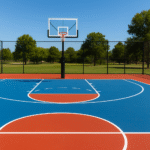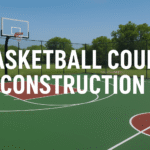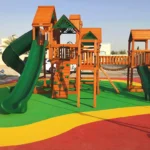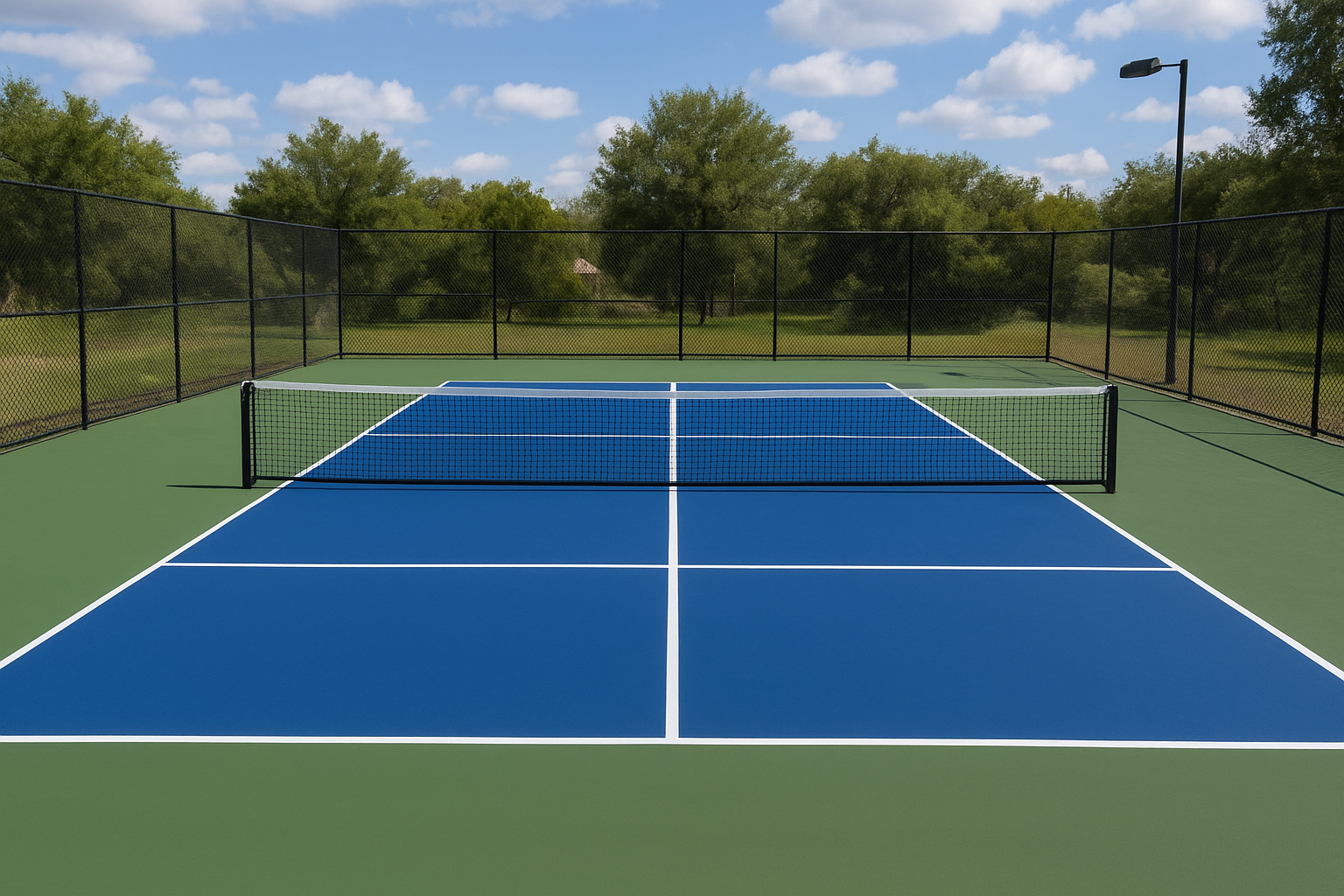Introduction to Pickleball Court Construction Service
Pickleball Court Construction Service has rapidly become one of the most popular sports in the world, blending elements of tennis, badminton, and ping-pong. As interest grows, so does the demand for professionally constructed courts. Whether you’re a community planner, a sports club owner, or an enthusiast looking to build a home court, understanding pickleball court construction is crucial. Hiring a reliable pickleball court construction company ensures quality, durability, and an enjoyable playing experience.
What is Pickleball?
History of Pickleball
Pickleball originated in the United States in the 1960s. What started as a backyard game for families has now evolved into a competitive sport with professional tournaments and leagues. Its unique combination of racket skills, fast-paced play, and simple rules makes it accessible to players of all ages.
Popularity Surge in India and Worldwide
India is witnessing a surge in pickleball’s popularity. Cities like Delhi, Mumbai, and Noida are investing in dedicated courts, and schools are introducing the sport to students. Globally, pickleball is now played in over 50 countries, with communities and clubs expanding at an unprecedented pace.
Importance of a Quality Pickleball Court
Player Safety
A well-constructed court minimizes injuries. Proper surface materials reduce the impact on joints and prevent slips, trips, and falls.
Game Performance
The right surface ensures consistent ball bounce and smooth gameplay, enhancing the overall player experience.
Durability and Maintenance
High-quality construction reduces long-term repair costs. Proper materials and drainage prevent cracks and surface wear.
Choosing the Right Pickleball Court Construction Company
Key Factors to Consider
-
Experience and portfolio
-
Material quality and options
-
Compliance with official court standards
Questions to Ask Before Hiring
-
What is the estimated timeline for completion?
-
Do you provide maintenance services?
-
Can you customize court design and layout?
Types of Pickleball Court Surfaces
Concrete Courts
Durable and low-maintenance, concrete is ideal for long-term use. It requires professional finishing to prevent rough patches.
Asphalt Courts
Asphalt offers flexibility and slightly softer impact than concrete. It is cost-effective but may require more frequent resurfacing.
Synthetic Acrylic Coating
Acrylic coatings provide excellent grip, weather resistance, and vibrant colors, making courts visually appealing.
EPDM Rubber Flooring
Rubber flooring enhances shock absorption, making it safer for older players and beginners.
Pickleball Court Construction Process
Site Preparation
Proper leveling and clearing of debris are crucial before starting construction. Soil stability must be assessed to prevent future cracks.
Base Layer Installation
The foundation determines the court’s durability. This layer includes compacted gravel, asphalt, or concrete depending on the chosen surface.
Surface Coating and Painting
Applying acrylic or other coatings ensures smooth gameplay. Lines are painted according to official dimensions for regulation play.
Net and Equipment Installation
High-quality nets, posts, and optional fencing complete the court, ensuring compliance with standards.
Dimensions and Layout Standards
Official Court Dimensions
A standard pickleball court measures 20×44 feet for both singles and doubles play, with a non-volley zone of 7 feet.
Recommended Clearances
At least 10 feet behind baselines and 5 feet on sides for safe movement is recommended.
Accessibility Considerations
Ensure ramps and pathways for wheelchair players, making the court inclusive for all.
Cost of Pickleball Court Construction Service
Factors Affecting Costs
Material type, court size, location, and additional features like lighting and fencing.
Budget-Friendly Options
Using asphalt or recycled materials can reduce construction costs while maintaining quality.
Investment vs. Long-Term Benefits
Although initial costs can be high, professionally built courts last longer, require less maintenance, and provide better player satisfaction.
Maintenance Tips for Pickleball Courts
Cleaning and Surface Care
Regular sweeping, pressure washing, and debris removal prevent damage and maintain appearance.
Repairing Cracks and Wear
Timely repairs prevent small issues from turning into costly problems.
Seasonal Maintenance
Drainage systems should be checked, and surfaces should be treated to withstand extreme weather.
Advantages of Hiring a Professional Pickleball Court Construction Company
Expert Design and Planning
Professionals ensure correct slope, drainage, and surface texture for optimal play.
Time and Cost Efficiency
Proper planning avoids delays and reduces unforeseen expenses.
Compliance with Standards
A professional company guarantees the court meets official regulations and safety standards.
Common Mistakes in Pickleball Court Construction
Poor Drainage
Water accumulation leads to surface damage and unsafe playing conditions.
Incorrect Surface Selection
Choosing the wrong surface can affect gameplay and increase maintenance.
Inadequate Spacing
Crowded courts limit movement and increase injury risk.
Innovative Features for Modern Pickleball Courts
LED Lighting Systems
Extend playing hours and improve visibility for night games.
Fencing and Safety Nets
Enhance safety and prevent stray balls from leaving the court area.
Multi-Sport Adaptability
Designing courts that accommodate tennis or badminton increases usability.
Environmental Considerations
Eco-Friendly Materials
Use recycled asphalt, low-VOC coatings, and sustainable paints.
Water Drainage Solutions
Permeable surfaces prevent flooding and reduce environmental impact.
Sustainable Construction Practices
Minimize waste and adopt green construction methods to protect surroundings.
How to Choose the Right Location
Indoor vs Outdoor Courts
Consider weather patterns, sunlight exposure, and maintenance needs.
Sunlight and Wind Exposure
Courts should minimize glare and wind interference for fair play.
Accessibility and Community Impact
Select locations easily reachable for players while benefiting the local community.
Conclusion
Building a pickleball court is more than just laying down a surface; it’s about creating a safe, durable, and enjoyable space for players. Hiring a trusted pickleball court construction company ensures top-quality materials, expert planning, and compliance with standards. Whether for a community, school, or private use, investing in professional construction guarantees long-term satisfaction and promotes the sport’s growth.
FAQs
1. How long does it take to build a pickleball court?
Depending on the surface and features, construction can take anywhere from 4 to 12 weeks.
2. What is the average cost of a pickleball court in India?
Costs vary widely, typically ranging from ₹5 lakh to ₹15 lakh depending on materials and features.
3. Can pickleball courts be used for other sports?
Yes, multi-sport courts can accommodate tennis, badminton, and mini-volleyball with proper markings.
4. How often should a pickleball court be resurfaced?
Typically, every 5–7 years for asphalt or acrylic surfaces, depending on usage.
5. What are the benefits of hiring a professional construction company?
Professionals ensure safety, durability, proper design, regulatory compliance, and reduced maintenance issues.





